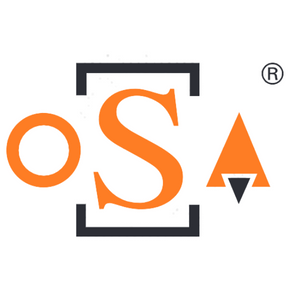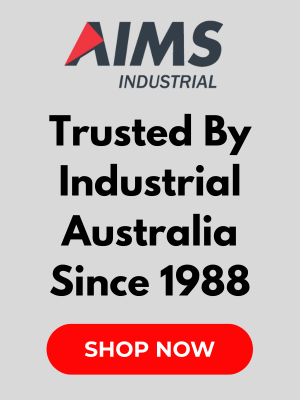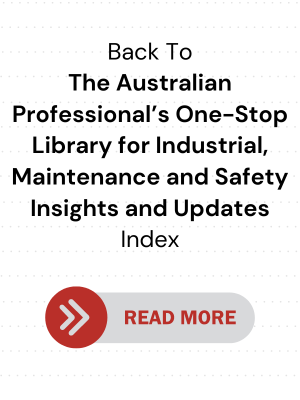Are Klingspor Abrasive Tools Safe to Use?

.png)
 As a user of high-speed abrasive tools, you may have already seen the oSa logo.
As a user of high-speed abrasive tools, you may have already seen the oSa logo.
(You may have also wondered why you couldn’t find the Australian Standard details you’re already familiar with on Klingspor products.)
oSA stands for the Organisation for the Safety of Abrasives. It’s an internationally recognized authority on cutting and grinding tools founded in Germany in 2000.
That’s when leading producers of high-grade abrasive products came together to document the high safety standards of their products, to ensure that the quality of their products remains consistently high in the interests of abrasive product users.
oSa members are committed to ensuring the adherence to safety standards and sustaining quality assurance.
Klingspor is an oSa member.
What are the significant differences between the requirements according to oSa and the Australian Standards AS1788.1?
The main differences are the requirements for product labels, as well as the reference to the use of wheel flanges with identical diameter. The regulations of the oSa certification require the same facts but refrain from labeling the product in the same way.
There are two reasons for these differences:
- Machine manufacturers already provide hand-held grinding tools with the correct flanges ex-works.
- The wide variety of fixing systems and flange types available these days does not allow comprehensive and accurate documentation on the product label.
This is the only requirement where the guidelines of the Australian Standard are more demanding than the ones of oSa.
Update: AS 1788 is now superseded by AS EN 12413:2022 as of December 2022.
In the following, you will find some examples to outline why the demands of the oSa certification (based on European standard EN 12413) are far stricter than the Australian Standard AS1788.1.
Scope of testing
The Australian Standard does not stipulate the scope of a product sample test. The amount of testing relies on the manufacturer’s discretion.
The oSa standard requires that one out of every 1,000 discs must be tested to the point of destruction. All tests in accordance with oSa are process-controlled throughout the manufacturing process:
-
Bursting test: The Australian Standard test requires only 1.5 times the maximum operating speed for all diameters. For abrasive tools on hand-held, portable grinding machines, EN 12413 stipulates a generally higher test speed which is defined in relation to the diameter.
-
Side load / Impact test: The Australian Standard requires no side load/impact tests. In contrast, according to EN 12413, the side load is regularly checked, depending on the diameter and application (free-hand or stationery).
-
Run-out tolerances: The Australian Standard gives no run-out tolerances. On the contrary, EN 12413 determines the run-out tolerances (deviation concentricity from axis) depending on the diameters.
-
Tolerance of thickness: The Australian Standard specifies no thickness tolerances. EN 12413 demands tolerance values according to the nominal value stated.
All high-quality abrasive products of the member companies are subject to the stringent requirements of oSa. These products are manufactured and tested based on European safety standards.
Therefore, products with the oSa label assure a high-quality production process and high standards of safety checking.
So, are Klingspor’s abrasive tools safe to use?
Yes, not only are they safe, but they are also even safer!
Klingspor is a manufacturer of the highest quality abrasive tools and accepts responsibility for its products. Therefore, Klingspor holds Global Product Liability Insurance for its entire product range.
As a user of abrasive tools with an oSa label, you can be sure that Klingspor products meet the highest precautionary measures and latest production standards that exist around the world.
AIMS' Note on Safe Use of Abrasives
- Inspection: Before using any abrasive disc or wheel, carefully inspect it for cracks, chips or damage. Beware that damaged abrasives can shatter at high speeds and cause serious injury to you or other people nearby. Some brands indicate ‘use by’ dates, which is important because some abrasives deteriorate over time.
- Mounting: Ensure proper and secure mounting of the abrasive onto the tool, using the correct flanges and blotters as needed. Never exceed the maximum RPM rating of the abrasive. Always unplug or disconnect power tools (eg power grinders) before changing abrasives.
- PPE: Always use machine guards designed for the specific abrasive tool. Wear essential safety gear, including safety glasses or goggles or a full-face shield for maximum protection. Gloves, ear protection and dust masks / respirators are often necessary, depending on the material being worked on and the type of abrasive you are using.
- Controlled usage: Start tools smoothly, allowing them to reach full speed before applying them to the workpiece. Avoid excessive pressure that can overheat or break the abrasive. If an abrasive is discolored or smells burnt, replace it.
- Environment: Be mindful of sparks and debris generated by abrasives. Use dust extraction equipment to minimise exposure to harmful dust. Work in a well-ventilated area clear of flammable materials.
- Maintenance: Keep your abrasives clean, sharp and properly maintained. Store them in a safe and organized place when not in use.
- Disposal: Dispose of used abrasives properly according to best practices and local regulations.



.png)